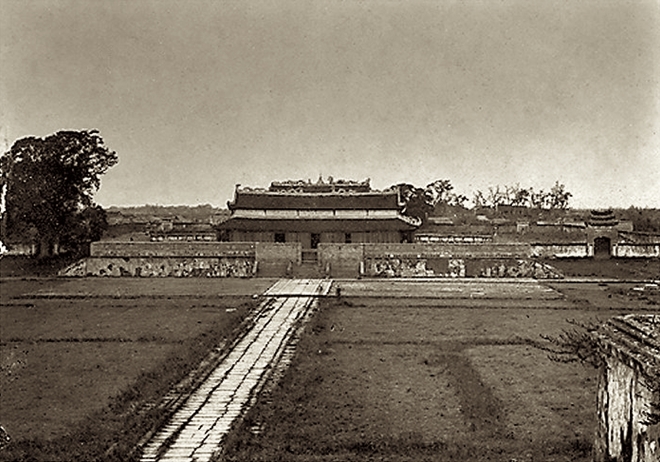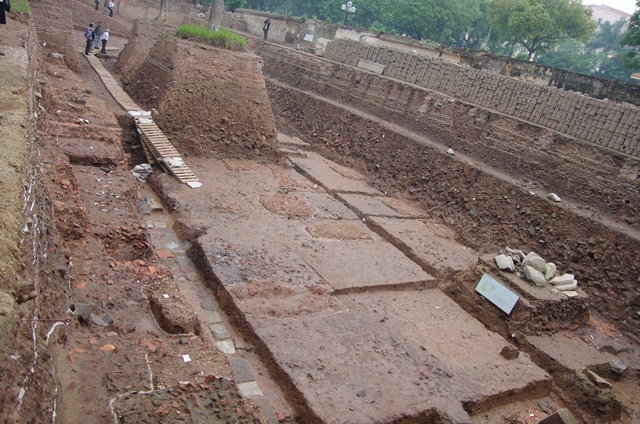Valuable vestiges discovered in Thang Long Royal Citadel
PSNews – The Thang Long – Hanoi Heritage Preservation Center in collaboration with the Vietnam Institute of Archaeology held a scientific seminar on April 17 to review the preliminary results of the Kinh Thien Palace’s excavation in 2017.
 |
| Kinh Thien Palace in the past. |
Accordingly, in 2017, the Thang Long – Hanoi Heritage Preservation Center and the Vietnam Institute of Archaeology had conducted the excavation on a total area of nearly 1,000sqm in the main area of Kinh Thien Palace.
At the seminar, Associate Professor Tong Trung Tin – Head of the Vietnam Archaeology Association stated that the archaeological vestiges show major structures of the Ly, Tran, and Le Dynasties (from the 10th to 20th centuries), but their sizes and functions have yet to be determined and further research is needed.
 |
The artifacts founded in these cultural layers include stone bases of columns, walls, and courtyards, stone foundations, perimeter walls, and drainage passages.
He also revealed that, In particular, archaeologists also uncovered the largest ever number of bricks and tiles that were used to decorate palace roofs in the 15th and 16th century.
“Each line of the tiles is shaped like a dragon with the body lying along the roof. The line ends with a dragon tail and starts with a dragon head carved sophisticatedly. The dragon with five-claw legs was used on the roof of the king’s palace, while the one with four-claw legs was used on the roof of the crown prince’s palace. The pieces we found are exactly how they have been described in history,” Archaeologist Trung Tin said.
Professor Nguyen Quang Ngoc, Deputy Head of the Vietnamese Association of Historical Sciences noted that the vestiges of this excavation played a valuable role in learning about the architecture of Kinh Thien Palace.
Additionally, he suggested that the excavation site should be widened to have a panoramic view of Kinh Thien Palace as well as an insight into the architectural works of different dynasties in the past.

